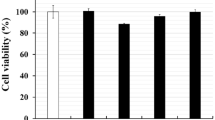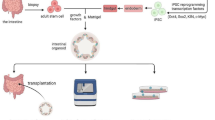Abstract
It is well known that lactoferrin (Lf) is a potent inhibitor towards several enveloped and naked viruses, such as rotavirus, enterovirus and adenovirus. Lf is resistant to tryptic digestion and breast-fed infants excrete high levels of faecal Lf, so that its effect on viruses replicating in the gastrointestinal tract is of great interest. In this report, we analysed the mechanism of the antiviral action of this protein in three viral models which, despite representing different genoma and replication strategies, share the ability to infect the gut. Concerning the mechanism of action against rotavirus, Lf from bovine milk (BLf) possesses a dual role, preventing virus attachment to intestinal cells by binding to viral particles, and inhibiting a post adsorption step. The BLf effect towards poliovirus is due to the interference with an early infection step but, when the BLf molecule is saturated with Zn+2 ions, it is also capable of inhibiting viral replication after the viral adsorption phase. The anti-adenovirus action of BLf takes place on virus attachment to cell membranes through competition for common glycosaminoglycan receptors and a specific interaction with viral structural polypeptides. Taken together, these findings provide further evidence that Lf is an excellent candidate in the search of natural agents against viral enteric diseases, as it mainly acts by hindering adsorption and internalisation into cells through specific binding to cell receptors and/or viral particles.
Similar content being viewed by others
References
Andersen JH, Osbakk SA, Vorland LH, Traavik T, Gutteberg TJ. 2001 Lactoferrin and cyclic lactoferricin inhibit the entry of human cytomegalovirus into human fibroblasts. Antiviral Res 51, 141-149.
Andersen JH, Jenssen H, Gutteberg TJ. 2003 Lactoferrin and lactoferricin inhibit Herpes simplex 1 and 2 infection and exhibit synergy when combined with acyclovir. Antiviral Res 58, 209-215.
Arnold D, Di Biase AM, Marchetti M et al. 2002 Antiadenovirus activity of milk proteins: lactoferrin prevents viral infection. Antiviral Res 53, 153-158.
Bellamy W, Takase M, Wakabayashi H, Kavase K, Tomita M. 1992 Antibacterial spectrum of lactoferricin B, a potent bactericide peptide derived from the N-terminal region of bovine lactoferrin. J Appl Bacteriol 73, 472-479.
Berkhoaut B, vanWamel JL, Beljaers L, Meijer DK, Visser S, Floris R. 2002 Characterization of the anti HIV effects of native lactoferrin and other milk proteins and protein-derived peptides. Antiviral Res 55, 341-355.
Boulanger P. 1999 Cell receptors for human adenoviruses. J Soc Biol 193, 77-84.
Di Biase AM, Pietrantoni A, Tinari A et al. 2003 Heparin interacting sites of bovine lactoferrin are involved in anti-adenovirus activity. J Med Virol 69, 495-502.
Fujihara T, Hayashi K. 1995 Lactoferrin inhibits herpes simplex virus type-1 (HSV-1) infection to mouse cornea. Arch Virol 140, 1469-1472.
Grover M, Giouzeppos O, Schnagel RD, May JT. 1997 Effect of human milk prostaglandins and lactoferrin on respiratory syncitial virus and rotavirus. Acta Paediatrics 86, 315-316.
Hara K, Ikeda M, Saito S et al. 2002 Lactoferrin inhibits hepatitis B virus infection in cultured human hepatocytes. Hepatol Res 24, 228-235.
Harmsen MC, Swart PJ, de Bethune MP et al. 1995 Antiviral effects of plasma and milk proteins: lactoferrin shows potent activity against both human immunodeficiency virus and human cytomegalovirus replication in vitro. J Infect Dis 172, 380-388.
Hasegawa K, Motsuchi W, Tanaka S, Dosako S. 1994 Inhibition with lactoferrin of in vitro infection with human herpes virus. Japan J Med Sc 47, 73-85.
Ikeda M, Nozaki A, Sugiyama K et al. 2000 Characterization of antiviral activity of lactoferrin against hepatitis C virus infection in human cultured cells. Virus Res 66, 51-63.
Ikeda M, Sugiyama K, Tanaka T et al. 1998 Lactoferrin markedly inhibits hepatitis C virus infection in cultured human hepatocytes. Biochem Biophys Res Comm 245, 549-553.
Ji ZS, Mahley RW. 1994 Lactoferrin binding to heparan sulfate protoglycans and the LDL receptor-related protein. Further evidence rapporting the importance of direct binding of remnant lipoproteins to HSPG. Arterioscler Thromb 14, 2025-2031.
Levay PF, Viljoen M. 1995 Lactoferrin: a general review. Haematologica 80, 252-267.
Lin TY, Chu C, Chiu CH. 2002 Lactoferrin inhibits enterovirus 71 infection of human embryonal rhabdomyosarcoma cells in vitro. J Infect Dis 186, 1161-1164.
Marchetti M, Longhi C, Conte MP, Pisani S, Valenti P, Seganti L. 1996 Lactoferrin inhibits herpes simplex virus type 1 adsorption to Vero cells. Antiviral Res 29, 221-231.
Marchetti M, Pisani S, Antonini G, Valenti P, Seganti L, Orsi N. 1998 Metal complexes of bovine lactoferrin inhibit in vitro replication of herpes simplex virus type 1 and 2. Biometals 11, 89-94.
Marchetti M, Superti F. 2001 Antiviral activity of lactoferrin. In: Pandalai SG, ed. Recent developments in antiviral research. Trivandrum: Transworld Research Network, 1, 193-203.
Marchetti M, Superti F, Ammendolia MG, Rossi O, Valenti P, Seganti L. 1999 Inhibition of poliovirus type 1 infection by iron-, manganese-and zinc-saturated lactoferrin. Med Microbiol Immunol 187, 199-204.
Murphy ME, Kariwa H, Mizutani T, Yoshimatsu K, Arikawa J, Takashima I. 2000 In vitro antiviral activity of lactoferrin and ribavirin upon hantavirus. Arch Virol 145, 1571-1582.
Nozaki A, Ikeda M, Naganuma A, et al. 2003 Identification of a lactoferrin-derived peptide possessing binding activity to hepatitis C virus E2 envelope protein. J Biol Chem 278, 10162-10173.
Pietrantoni A, Di Biase AM, Tinari A, et al. 2003 Bovine lactoferrin inhibits adenovirus infection by interacting with viral structural polypeptides. Antimicrob Agents Chemoter 47, in press.
Puddu P, Borghi P, Gessani S, Valenti P, Belardelli F, Seganti L. 1998 Antiviral effect of bovine lactoferrin saturated with metal ions on early steps of human immunodeficiency virus type 1 infection. Int J Biochem Cell Biol 30, 1055-1062.
Shimazaki K, Tazume T, Uji K et al. 1998 Properties of a heparin-binding peptide derived from bovine lactoferrin. J Dairy Sci 81, 2841-2849.
Shimizu K, Matsuzawa H, Okada K et al. 1996 Lactoferrin mediated protection of the host from murine cytomegalovirus infection by a T-cell-dependent augmentation of natural killer cell activity. Arch Virol 141, 1875-1889.
Superti F, Ammendolia MG, Valenti P, Seganti L. 1997 Antirotaviral activity of milk proteins: lactoferrin prevents rotavirus infection in the enterocyte-like cell line HT29. Med Microbiol Immunol 186, 83-91.
Superti F, Siciliano R, Rega B, Giansanti F, Valenti P, Antonini G. 2001 Involvement of bovine lactoferrin metal saturation, sialic acid and protein fragments in the inhibition of rotavirus infection. Biochim Biophys Acta 1528, 107-115.
Swart PJ, Kuipers ME, Smith C et al. 1996 Antiviral effects of milk proteins: acylation results in polyanionic compounds with potent activity against human immunodeficiency virus type 1 infection. AIDS Res Hum Retroviruses 12, 769-775.
Tanaka K, Ikeda M, Nozaki A et al., 1999 Lactoferrin inhibits hepatitis C virus viremia in patients with chronic hepatitis C. A pilot study. Jpn J Cancer Res 90, 367-371.
van der Strate BWA, Beljaars L, Molema G, Harmsen MC, Meijer DKF. 2002 Antiviral activities of lactoferrin. Antiviral Res 52, 225-239.
Van Hooijdonk ACM, Kussendrager KD, Steijns JM. 2000 In vivo antimicrobial and antiviral activity of components in bovine milk and colostrum involved in non-specific defence. Brit J Nutr 84, S127-S134.
Vorland LH. 1999 Lactoferrin: a multifunctional glycoprotein. APMIS 107, 971-981.
Wu HF, Monroe DM, Church FC. 1995 Characterization of the glycosaminoglycan-binding region of lactoferrin. Arch Biochem Biophys 317, 85-92.
Yi MY, Kaneko S, Yu DY, Murakami S, 1997 Hepatitis C virus envelope proteins bind lactoferrin. J Virol 71, 5997-6002.
Author information
Authors and Affiliations
Rights and permissions
About this article
Cite this article
Seganti, L., Di Biase, A.M., Marchetti, M. et al. Antiviral activity of lactoferrin towards naked viruses. Biometals 17, 295–299 (2004). https://doi.org/10.1023/B:BIOM.0000027708.27142.bc
Issue Date:
DOI: https://doi.org/10.1023/B:BIOM.0000027708.27142.bc




